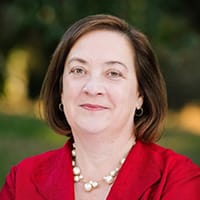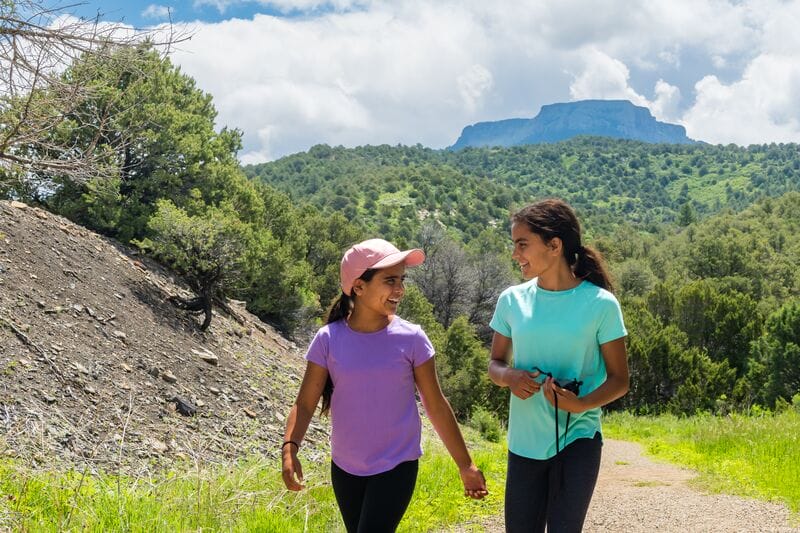 As I reflect on TPL’s anniversary year, I find myself thinking deeply about the people who founded Trust for Public Land 50 years ago and the accomplishments of our organization—from those early days when our founders worked with the Black Panthers to reclaim vacant lots in Oakland to create dozens of miniparks throughout the city, through work in every type of community, to the tremendous legacy we’ve built in the decades since.
As I reflect on TPL’s anniversary year, I find myself thinking deeply about the people who founded Trust for Public Land 50 years ago and the accomplishments of our organization—from those early days when our founders worked with the Black Panthers to reclaim vacant lots in Oakland to create dozens of miniparks throughout the city, through work in every type of community, to the tremendous legacy we’ve built in the decades since.
Those early efforts in Oakland were more than just creating parks and green spaces; they were about building community, fostering collaboration, and shaping a legacy of hope that continues to influence our work to this day.
Throughout this anniversary year as we’ve celebrated our history and impact, we’ve also been celebrating the stewards who have made it all possible—those who have come before us and who are with us now. It’s our staff and volunteers, donors, community partners, and advocates whose dedication to improve the places where they live and play that are the heroes of hope in TPL’s story of connecting everyone to the outdoors for the past half century. To all of them, I am deeply grateful.
As the New Year approaches, we naturally look to the next few years, but I challenge us to also look further. How will the stewards of our organization 50 years from now think about us? What will their world look like? Will they live in a country where everyone has access to the staggering beauty of our natural landscape? Will everyone be able to experience the joys and benefits of the outdoors? Or will they be trapped inside, unable to enjoy a planet so devastated by the effects of climate change that it looks more like the end of a disaster movie than any place we can recognize today?
We must acknowledge the very real fears people have for their communities and the world—about climate change and the other seemingly intractable problems we face. The challenge of climate change especially can be so overwhelming that cynicism can be self-defense, a way to protect ourselves from the pain of reckoning. Faced with the choice of solving these challenges together, instead of letting fear rule, I challenge us to turn to hope instead.
Hope is harder. Hope leaves us vulnerable to failure, to heartbreak. But hope also opens us to the possibility of joy. Hope summons the thrill of collective action and power of changing our communities for the better. Hope requires us to be brave. If our founders were here today, I believe hope is what they’d say was running through their veins, pushing them forward on a completely new path and mission. And it is hope—in us, here and now—that our future depends on.
Join me in an act of radical imagination this New Year. Instead of a future where we feel alienated from the land where we live—a future marred by feelings of isolation, division, and injustice—let’s imagine a future defined by connection. Connection to the land. Connection to each other. A feeling of deep belonging.
Hope borne of action. That is the work we’re already doing and what’s ahead of us still.
We know how to do our part, and we have 50 years of expertise of hope in action. Take for instance, Fishers Peak in Trinidad, Colorado (pictured above). For decades, people in Trinidad weren’t able to access their city’s iconic mesa because it was privately owned. Think about how alienating it must feel to know you’re not allowed to explore or enjoy the singular mountain you see every time you go outside.
TPL worked with the City of Trinidad and The Nature Conservancy to change that. And now, Fishers Peak is the second-largest state park in Colorado, with more than 19,000 acres of land protected. This is good for the environment and the economy too—attracting tourists and businesses, creating a future where the people of Trinidad can feel that sense of connection and belonging to the land where they live.
And look at Maine, where Katahdin Woods and Waters National Monument was recently created. This is the ancestral homeland of the Wabanaki Nations—including Penobscot, Passamaquoddy, Maliseet, Abenaki, and Mi’kmaq communities—where they legally steward only 1 percent of their ancestral lands. Again, we see that feeling of alienation—in this case, of being divorced from land your people have stewarded literally for thousands of years.
TPL recently acquired more than 30,000 acres of forestland in the Katahdin Woods region. This land is important to the environment. It’s critical to the local economy. But it’s also sacred to the Penobscot Nation—essential to their culture and community. That’s why we’re undertaking the largest NGO-led land back initiative in the history of the United States.
When we protect land like Fishers Peak, we help tackle the climate crisis—because there’s no more effective way to store carbon than in the trees and soil of a healthy forest. And we’ve protected over 4 million acres so far. We help communities thrive when we connect them to their land. We return that crucial sense of belonging—belonging to each other and to the world around us. With each success and every acre, we build momentum in hope borne of action.
In our cities, the role of green spaces is essential to climate protection. Cities are where 80 percent of Americans live, and in cities, heat is already the number one weather-related cause of death. Not storms, not earthquakes. Heat. What could be more alienating than feeling like the places where we live threaten our very existence?
There is no more striking example of this than a schoolyard with barren asphalt playgrounds. These are places where our children learn and play, yet on a hot day there is no respite from the oppressive heat. And there is often little if any inviting green space to experience the wonders of nature or offer quiet places for outdoor learning.
That’s why TPL is leading the movement to transform schoolyards across America to bring vibrant outdoor spaces to over 28 million kids who don’t have a park close to home. In addition to making communities more climate resilient and fostering a love of nature, having green space to play and learn at school improves student outcomes, and when we open these schoolyards to the public after school hours, it helps close the park equity gap so that all Americans can access a park or green space within a 10-minute walk of home. They become places where communities can gather, where connections are created and nurtured, where hope is grown, and where a child’s dreams about the future can be boundless.
It can be easy to get discouraged about complex problems like climate change and social divisions that seem too big to tackle. But I take great solace and hope in the fact that our work, TPL’s work, is a vital part of the solution. Ours is a shared dream of a future that’s cool and green, where all children have safe, beautiful places to play and explore. We can make that dream a reality, but we have to work faster and with more partners than ever before. You know that saying, “If you want to go fast, go alone, but if you want to go far, go together”? Well, we need to go fast and far. We need to protect land and build new parks and green spaces 10 times faster than we’ve done in the past, because that is what this moment requires. And I know that we’re equal to it.
Let’s imagine a half century from now, when the future stewards of our public lands look back 50 years to a time when society and our planet teetered on a dramatic precipice. And imagine how lucky they’ll feel to live in a time and place when everyone has access to nature and everyone feels they belong.
Let’s dare to hope it is possible. Let’s be brave enough—and committed enough—to get there.
Because we can get there. We already know the way. Our founders started us down the right path 50 years ago, but our reasoning has deepened, and so has our sense of urgency. This is our moment to push forward together, to take action borne of hope—for today, tomorrow, and future generations to come. Join us. Together, we can create a future to be proud of.
Diane Regas is president and CEO of Trust for Public Land.
Rising temperatures, bigger storms, and asphalt schoolyards pose significant risks during recess. Urge Congress to prioritize schoolyards that cool neighborhoods, manage stormwater, and provide opportunities for kids to connect with nature today!

